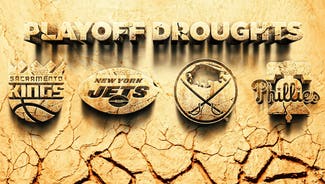
Bring On The Playoffs
The NHL has an audacious plan for finishing the 2019-20 season — knowledge of which was in the public sphere for less than a day before being called confusing, too big, too long, too inclusive and out of sync with the grand traditions of Lord Stanley and his fine old Cup by sports’ less charitable followers.
All of those complaints would be absolutely, unequivocally, entirely with merit and justification, were it not for the unique scenario the sports world finds itself in. If any of the changes survive into future seasons, the NHL power brokers and commissioner Gary Bettman will have lost their collective minds.
But, in these wild times of uncertainty and adaptation, the wacky, oversized, blown-up circus that the league is proposing, one where fully 24 out of 31 franchises have a shot at winning it all, is perfect.
Coming out of a crushing shutdown that it could neither have planned for nor mitigated, the league might have played it safe. Go into a 16-team postseason, have things pretty much as they were, maybe play a remaining few regular season games first, then shear a few games off next season to help with scheduling.
The purists would have liked it, and rather than Lord Stanley rolling in his grave, he would have likely nodded sagely from up high in the hockey heavens.
Instead, we have something different. Maybe not even better — just more appropriate for a warped reality that we will hopefully never know the likes of again.
The NHL tossed tradition to one side, just this one time, and produced a plot that indicated it has actually listened. Hockey fans want hockey, and they’re going to get it. A lot of it.
Assuming medical clearance is obtained, teams ranked five to 12 in each conference will each take part in a play-in series, narrowing the field to 16. At that stage, the top four in each conference, who in the meantime will have played a round robin against each other to determine final seeding positions, will enter the fray. The games will take place at two separate city sites, the locations still to be determined.
“As we seek some return to normalcy, this is an important day for NHL fans,” Bettman told reporters. “Since March 12, we've been hopeful and optimistic that by developing all options and alternatives, we could get to this point. I know I join sports fans everywhere when I say we cannot wait for the players to hit the ice again.”
Hockey franchises need and want action — and most of them are going to get it. Teams that entered mid-March feeling they had a chance don’t want that opportunity to be robbed from them, and with this plan, they won’t.
No one is unfairly disadvantaged. The top teams still will have to best four playoff opponents to secure the grand prize. Those near the top of the standings will still get to tussle for seeding priority, just like they would at the close of the regular campaign.
But yes, it does look different and feel different. It is not what hockey is used to, and that is entirely the point. To try to have a season that ends exactly as normal would seem absurd in some ways, like pretending that the last couple of months haven’t happened.
It needs to be something new and something just for right now. It is likely to be replicated in some way in other American sports, too, as it should. The NBA is mulling over various plans, with Dallas Mavericks owner Mark Cuban having put forward one that also involves 24 teams. Major League Soccer is likely to get innovative, as well, and is already looking over options. Every report surrounding Major League Baseball’s preferred plans mentions some kind of expanded playoff formula.
The players can and will deal with the changes.
“I just prefer to play hockey, I’ll be honest with you,” Boston Bruins captain Zdeno Chara told fans in a virtual chat session last week. “Whether it’s jumping into the playoffs or playing some sort of games to get ready for the playoffs, you just need to go with the flow.”
Yes, it is a bit confusing. The series will come thick and fast, and it is going to be tough to keep up. It is going to be a challenge to figure out what exactly the seeding games between the top teams before their elimination round all mean.
It’ll be strange without fans, and it will be quirky to see neutral sites with empty seats and all that kind of stuff.
It will be odd as hell to see the Stanley Cup hoisted amid such circumstances, and most of all, there will be so much hockey that it’s going to be tough to figure out what to watch.
After all that has come before it, that seems like a pretty decent problem to have.

